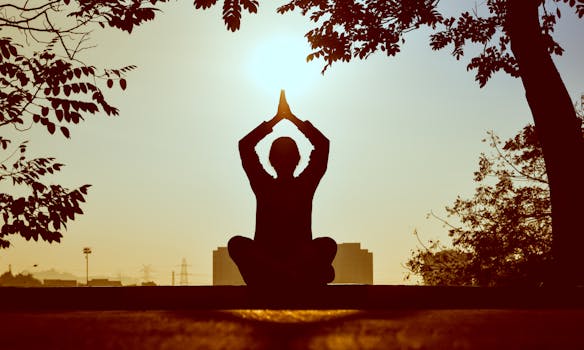Yin Yoga: Passive Poses for Flexibility and Deep Relaxation
In the fast-paced world we live in, finding time to relax and rejuvenate is essential for maintaining both physical and mental well-being. One practice that has gained popularity for its ability to promote deep relaxation and enhance flexibility is Yin Yoga. This unique form of yoga focuses on passive poses held for extended periods, allowing practitioners to delve into a meditative state while stretching the connective tissues of the body.
Understanding Yin Yoga
Yin Yoga is a style of yoga that emphasizes long-held, passive postures, typically held for three to five minutes or longer. Unlike more dynamic forms of yoga, such as Vinyasa or Ashtanga, which focus on muscle engagement and movement, Yin Yoga targets the deeper connective tissues, such as ligaments, tendons, and fascia. This approach not only enhances flexibility but also promotes a sense of calm and relaxation.
The Philosophy Behind Yin Yoga
The philosophy of Yin Yoga is rooted in traditional Chinese medicine and the concept of Yin and Yang. Yin represents qualities such as stillness, darkness, and receptivity, while Yang embodies activity, light, and movement. In Yin Yoga, practitioners aim to balance these opposing forces, fostering a sense of harmony within the body and mind.
Benefits of Yin Yoga
Yin Yoga offers a multitude of benefits that extend beyond physical flexibility. Here are some key advantages:
- Enhanced Flexibility: By holding poses for extended periods, Yin Yoga allows the body to gradually release tension in the muscles and connective tissues, leading to improved flexibility over time.
- Deep Relaxation: The meditative nature of Yin Yoga encourages relaxation of the mind and body, reducing stress and anxiety levels.
- Increased Circulation: Long-held poses stimulate blood flow to the joints and connective tissues, promoting overall health and vitality.
- Mindfulness and Meditation: Yin Yoga encourages practitioners to cultivate mindfulness, helping them connect with their breath and body in a profound way.
- Emotional Release: The stillness of Yin Yoga can facilitate emotional release, allowing practitioners to process feelings and experiences that may be stored in the body.
Common Yin Yoga Poses
Yin Yoga includes a variety of poses that target different areas of the body. Here are some common poses that practitioners can incorporate into their practice:
- Butterfly Pose (Baddha Konasana): This pose opens the hips and stretches the inner thighs. Sit with the soles of your feet together and allow your knees to fall outward, holding the position for several minutes.
- Dragon Pose: A deep lunge that stretches the hip flexors and groin. From a lunge position, lower your hips toward the ground and hold for an extended period.
- Supported Bridge Pose: This pose opens the chest and stretches the spine. Lie on your back with your knees bent and feet flat on the floor, then lift your hips and place a block or bolster under your sacrum.
- Sphinx Pose: A gentle backbend that stretches the spine and opens the chest. Lie on your stomach and prop yourself up on your forearms, allowing your lower back to relax.
- Reclining Twist: This pose promotes spinal mobility and relaxation. Lie on your back, draw one knee to your chest, and gently guide it across your body into a twist.
Case Studies and Statistics
Research has shown that practices like Yin Yoga can have significant benefits for mental health. A study published in the journal Complementary Therapies in Medicine found that participants who engaged in Yin Yoga reported a 30% reduction in anxiety levels after just eight weeks of practice. Additionally, a survey conducted by Yoga Alliance revealed that 70% of practitioners felt more relaxed and centered after participating in Yin Yoga classes.
Conclusion
Yin Yoga is a powerful practice that offers numerous benefits for both the body and mind. By incorporating passive poses held for extended periods, practitioners can enhance their flexibility, promote deep relaxation, and cultivate mindfulness. As the world continues to move at a rapid pace, taking time to engage in Yin Yoga can provide a much-needed respite, allowing individuals to reconnect with themselves and find balance in their lives. Whether you are a seasoned yogi or a beginner, exploring the depths of Yin Yoga can lead to profound transformations in your overall well-being.
